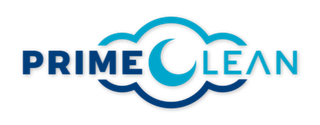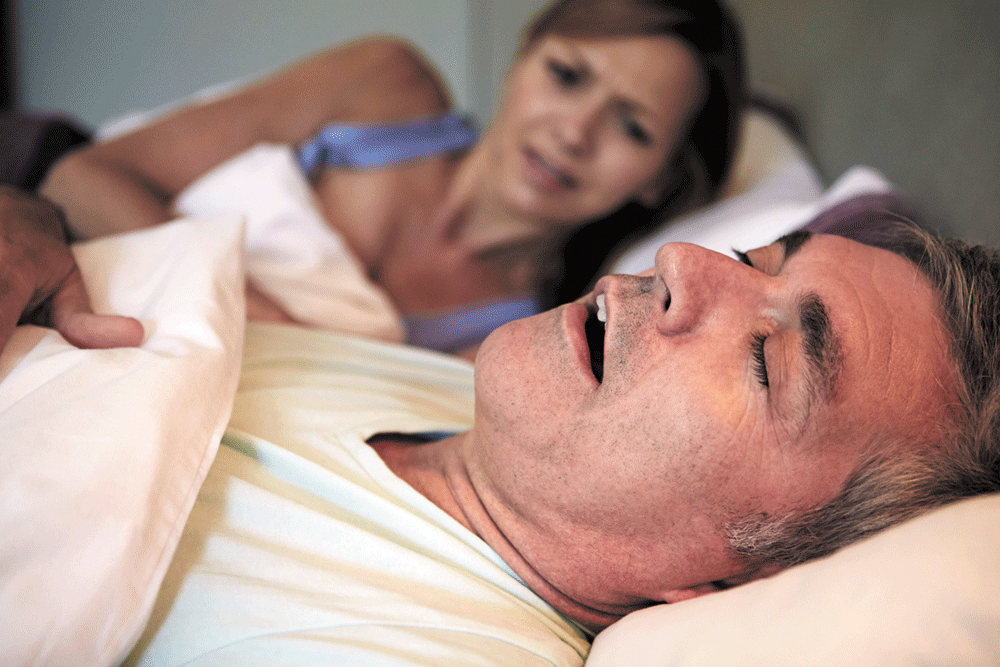14 Frequently Asked Questions (FAQs) About Sleep Apnea and CPAP Machines
Dec 8, 2020 by PrimeClean
More than 20 million Americans live with a condition known as sleep apnea. Children are believed to make up between 1 to 4% of this number. When left untreated, sleep apnea can contribute to other conditions like hypertension, cardiovascular disease, weight gain, memory problems, and headaches.
Continuous positive airway pressure (CPAP) therapy is possibly the most common treatment for obstructive sleep apnea (OSA). The therapy includes regular usage of a CPAP device, which prevents the airway from collapsing while an individual is asleep. Besides CPAP, there are several home therapies that people living with sleep apnea can use to alleviate their condition.
In this article, we explore the 14 most common questions about sleep apnea and CPAP machines.
1. What is Sleep Apnea?
Sleep apnea is a condition that causes difficulty in breathing during sleep. The condition is defined by the health services provider MayoClinic.org as "a potentially serious sleep disorder in which breathing repeatedly stops and starts." This could disrupt the amount of oxygen an individual gets, disrupting some critical body functions.
MayoClinic.org categorizes sleep apnea into three types:
- Obstructive Sleep Apnea (OSA): Is the most common type of sleep apnea. It is caused by a collapse of the soft tissue at the back of the throat during sleep, effectively blocking the airway.
- Central Sleep Apnea (CSA): Results from the brain's failure to trigger muscles responsible for regulating breathing.
- Complex Sleep Apnea Syndrome (CSAS): Is a combination of obstructive sleep apnea and central sleep apnea.
2. What are the Causes of Sleep Apnea?
According to the National Heart, Lung, and Blood Institute, the underlying causes of sleep apnea include obesity, having large tonsils, endocrine disorders, neuromuscular disorders, heart or kidney failure, specific genetic syndromes, and premature birth.
Sleep apnea can also be caused by muscular changes in the back of the throat during sleep and physical obstructions that restrict airflow caused by thickened tissues or fat stored around the airway.
The medical website, MedicalNewsToday.com, reports that brain function deficiencies that may cause breathing to malfunction can cause central sleep apnea (CSA). The same source also reports that CSA has been found to correlate with conditions like stroke and heart failure and the use of painkillers. It is also common among individuals who have recently ascended to a high altitude.
3. What are the Symptoms of Sleep Apnea?
Some of the common symptoms of sleep apnea include:
- Loud snoring
- Morning headaches
- Restless sleep
- Insomnia
- Fatigue
- Frequent sleep interruptions
- Choking, snorting, or gasping during sleep
- Waking up with a dry or sore throat or mouth
Mental issues such as forgetfulness, mood changes, and a decreased interest in sex have also been linked with sleep apnea. Of course, these symptoms could also result from several other health conditions, thus the need to consult a professional if you experience most of the symptoms above. For children, one of the symptoms of sleep apnea is hyperactivity.
4. What are the Factors that Increase the Risk of Sleep Apnea?
The factors contributing to increased chances of having sleep apnea can be genetic or anatomical (to do with the body structure). External factors have also been identified. We list some of the genetic or anatomical factors that increase the risk of sleep apnea below:
- Men are two to three times more at risk of sleep apnea than women.
- Women in menopause
- Overweight or obese individuals
- People above the age of 40
- Individuals with a family history of sleep apnea
- Having a large neck circumference (above 16 inches for men and above 15 inches for women)
External factors that can increase the chances of having sleep apnea include:
- Smoking
- Alcohol or sedatives use
- Supine sleeping (sleeping flat on your back)
5. What Can Happen if Sleep Apnea Goes Untreated?
The National Institute of Neurological Disorders and Stroke warns that sleep apnea does not only threaten the comfort of your sleep but can also threaten your life. When left untreated, sleep apnea leads to severe complications, including:
- Liver problems
- Heart problems, like coronary heart disease, heart failure, high blood pressure, and hypertension
- Impaired focus and cognition
- Memory problems
- Stroke and Transient Ischemic Attacks (TIAs), sometimes called "mini-strokes."
- Type 2 diabetes
- Complications during and after major surgery
6. How is Sleep Apnea Diagnosed?
To determine whether you have sleep apnea, a doctor may do a polysomnogram, also known as a sleep study. This is a procedure that electronically tests (by recording brain waves) for specific physical activity while you sleep. When this procedure is complete, the results are sent to a sleep specialist for analysis.
To diagnose sleep apnea, symptoms like snoring and daytime sleepiness are used alongside measurement tests like the polysomnogram.
7. Can a Sleep Study be Done at Home?
Setting up a sleep study device in your house with a trained therapist's help is possible. However, the National Center for Biotechnology Information's National Library of Medicine notes the advice of the American Academy of Sleep Medicine (AASM): "only a medical provider can diagnose medical conditions such as obstructive sleep apnea (OSA) and primary snoring."
8. What are the Common Treatments for Sleep Apnea?
Depending on the type of sleep apnea a patient lives with, treatments can either be in the form of surgery or therapy. For people with mild OSA, some types of mouthpieces that hold the jaw or tongue in a specific position are an option.
Treatment for central sleep apnea (CSA) usually involves managing the underlying condition, such as a brain infection, heart failure, altitude adjustment, and other factors that may have contributed to the breathing challenges that result in sleep apnea.
9. What is a CPAP Machine, and How Does it Work?
CPAP therapy is the treatment approach for patients with sleep apnea. A CPAP machine is a medical device used to provide a constant, gentle flow of pressurized air that prevents the collapse of the individual's airway during sleep.
The Alaska Sleep Clinic identifies three main parts of CPAP machines:
- CPAP Motor: Is a small quiet compressor that takes in room temperature air and pressurizes it to deliver the right amount of air pressure needed to clear obstructions in the throat.
- CPAP Hoses: Are pipes that convey the pressurized air from the motor to the wearer's mask. The main pipe is usually 6 feet long, but its diameter can differ depending on the type of machine used.
- CPAP Mask: Is placed on the face and comes in various shapes and sizes depending on how comfortable the individual finds it. There are three major mask variations to choose from: nasal pillows, nasal masks, and full-face masks.
10. What Are Some Home Remedies for Sleep Apnea?
Home remedies for sleep apnea are predominantly linked to lifestyle changes. Some of the recommendations by the medical website HealthLine.com that people living with sleep apnea can use to alleviate the condition at home include:
Losing weight and maintaining a healthy Body Mass Index (BMI)
Yoga
Changing your sleep position
Using a humidifier
Abstaining from alcohol and smoking
Using oral appliances
Other lifestyle changes that could make a difference include dealing with any allergies, establishing a good sleep routine, eating healthy, and ensuring that the place where you sleep is comfortable and clean.
11. What are the Advantages of Using CPAP Therapy?
Some of the main advantages of using a CPAP machine include:
- Ensuring continuous sleep so that people living with sleep apnea can be fully awake during the day
- Lowering blood pressure
- Reducing the risk of medical conditions associated with sleep apnea
12. What are the Complications or Side Effects of CPAP?
Complications that may occur with CPAP therapy use include:
- Excessive dreaming, especially during the first days of treatment
- Dry nose and sore throat
- Congested or runny nose, and sneezing
- Eyes and facial skin irritation
- Abdominal bloating
Other problems with CPAP machines that have been reported by patients include anxious and claustrophobic feelings, nosebleeds, and difficulty falling asleep.
13. How Soon Will you Feel the Effects of CPAP Therapy?
The provider of sleep studies, coaching, and treatments, Sleep Health Solutions, advises that most patients feel CPAP therapy's effects as soon as they start the treatment. However, things are not always so simple for everybody. For some, the effects are cumulative, meaning that improvements only come with regular use of the machine for several weeks or even months.
14. What are Some Tips to Make CPAP Therapy More Comfortable?
Some of the discomfort caused by CPAP therapy can be alleviated by:
- Ensuring the mask fits the patient's face perfectly by making accommodations for different face shapes and sizes.
- Starting by using your CPAP device for short periods to get used to it
- Using the ramp setting to regulate the device to start slowly before gradually increasing the air pressure
- Using a humidifier or a corticosteroid nasal spray medicine to alleviate nasal irritation and dryness
Get more information about how you can deal with the most common challenges associated with using CPAP machines here.




